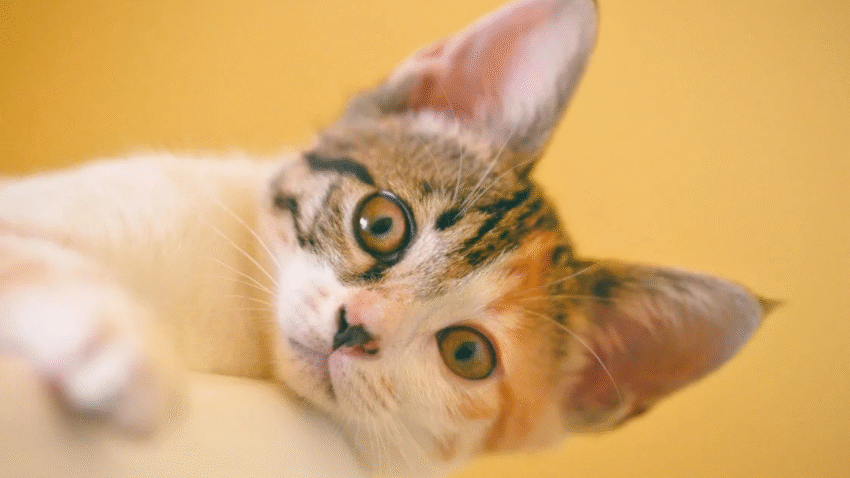Introduction
Nervous about giving your kitten a bath? You’re not alone. While cats are generally good at grooming themselves, sometimes a bath becomes necessary—especially for young kittens who get into messes. In this step-by-step guide, you’ll learn how to bathe a kitten safely at home without stress or scratches. Whether it’s your first time or you just need a better method, this tutorial will help you bathe your kitten gently and confidently.
Why Bathing a Kitten Matters
Bathing a kitten may not be a regular chore, but there are situations where it’s essential for their health and comfort. These include:
- Removing dirt or food stuck in fur
- Cleaning after a litter box accident
- Treating flea infestations or skin conditions
- Helping orphaned kittens stay clean
Because kittens are still learning to groom themselves, a safe and effective bath helps them stay healthy and develop good hygiene. Done correctly, it also builds trust and comfort around being handled.
Step-by-Step Guide to Bathing a Kitten Safely
Step 1: Gather Your Supplies
Preparation is key. Before you start, have everything ready:
- Shallow basin or sink
- Lukewarm water (test with your wrist)
- Kitten-safe shampoo (never use human or dog products)
- Washcloth or sponge
- Soft towel or two
- Non-slip mat or folded towel for sink bottom
- Hair dryer on a low, warm setting (optional)
Place all items within arm’s reach to avoid leaving your kitten unattended.
Step 2: Set the Mood
Kittens are sensitive to noise and temperature. Make the room calm and warm (22–24°C / 72–75°F) before you begin. Speak gently to your kitten and pet them calmly to create a relaxed environment.
If your kitten is anxious, wrap them in a towel and hold them close for a minute or two to help them settle.
Step 3: Prepare the Bathing Area
Fill your basin or sink with just a few inches of lukewarm water. Place a non-slip mat or towel on the bottom to keep your kitten steady and safe. Never run water directly over your kitten—this can startle them.
Keep your hands damp and the shampoo bottle open before picking them up.
Step 4: Wet Your Kitten Gently
Place your kitten slowly into the basin with their feet touching first. Support their body and use your hand or a cup to gently pour water on their back and sides. Avoid the face and ears.
Use a soft cloth to dampen the legs, chest, and tail. Always keep one hand on your kitten for stability.
Step 5: Apply Kitten Shampoo
Lather a small amount of kitten shampoo in your hands first, then gently massage it into their coat, avoiding the face, eyes, ears, and mouth.
Focus on dirty areas like paws, belly, and rear. Work quickly but gently, keeping the process under 5 minutes.
Step 6: Rinse Thoroughly
Rinse your kitten carefully with a clean cup of lukewarm water or a handheld sprayer on a low, quiet setting. Make sure to remove all shampoo, as residue can cause itching or skin irritation.
Avoid rinsing water near their head. Use a damp cloth for any light cleaning around the face.
Step 7: Dry Immediately and Carefully
Lift your kitten out of the bath and wrap them in a warm, soft towel. Pat gently to remove water—do not rub, as it may frighten or damage delicate fur.
If your kitten tolerates it, use a blow dryer on the lowest heat and speed setting while keeping it several inches away. Hold your hand near the dryer to test the heat level.
Make sure they’re completely dry and warm before letting them explore.
Common Mistakes to Avoid
1. Using Hot or Cold Water
Always use lukewarm water. Water that’s too hot or cold can shock your kitten and create a negative experience.
2. Getting Water in Their Ears or Nose
Kittens are prone to infections. Avoid pouring or spraying near their face—use a damp cloth to clean sensitive areas.
3. Using the Wrong Shampoo
Human and dog shampoos can be toxic to kittens. Always use products labeled for cats or kittens.
4. Skipping the Drying Step
Letting your kitten air-dry can lead to chills. Always dry them fully with a towel or dryer in a warm, draft-free room.
5. Bathing Too Often
Too many baths can dry out your kitten’s skin. Only bathe when absolutely necessary—usually no more than once a month unless advised by your vet.
Extra Tips & Recommendations
- Use Treats and Praise: Give your kitten a treat and lots of cuddles after each bath. This creates a positive association with the experience.
- Try a Buddy System: If your kitten is extra squirmy, have a second person help by holding or distracting them during the bath.
- Do It Early: The younger your kitten is when they experience their first bath, the easier it will be to make it a routine part of care.
- Desensitize First: Let them play near the bath area or hear running water in a non-threatening way before bathing day.
Need help with grooming after bath time? Read our guide on [how to brush your cat’s coat without causing stress].
Conclusion
Bathing a kitten at home doesn’t have to be stressful. With the right tools, a gentle touch, and a calm environment, you can help your kitten stay clean and comfortable without fear. Make bath time a bonding experience—not a battle—and your kitten will grow to trust and tolerate it more each time.
Keep these steps in mind and you’ll both come out of the experience happy and dry (well, mostly)!
